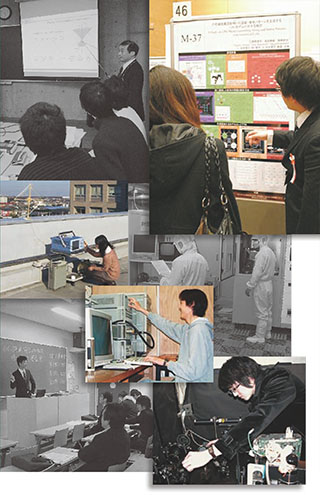
As evidenced by the IT revolution, we must embrace change due to the rapid increase in the social importance of technology. Areas of interest are constantly broadening, and thus, the actual research fields expand accordingly. We explore the best ways to integrate collaborative and interdisciplinary research works into our educational systems, with the Graduate program of Electronic Engineering continuing to offer an excellent learning environment, strongly supported by our dedicated faculty. Students will have every opportunity to submit papers to national and international academic societies, and the Department believes that students will find the research area and theme most relevant, eventually leading to the most desirable career.
Electronic Engineering technologies are now seen as essential to many interdisciplinary fields, therefore we believe we must educate candidates for the Master’s and Doctoral degrees in order that they can grow to become leaders in research and industry. To stimulate innovation, our admissions policy is inclusive, and we aim to achieve theoretically fundamental scientific findings as well as be able to design and develop innovative systems, devices, and materials. We provide top-ranking facilities including the latest communication systems and fabrication equipment to help achieve these goals.
Most research themes in the Graduate program of Electronic Engineering are interdisciplinary and are focused on applied fields. They target four broad areas: 1) communication networks and their applications and devices, for example in use in improving indoor wireless communication, M2M communication systems and ultra-wideband communication systems; 2) informatics and computer science based on signal processing, systems control, and cognitive technologies to realize the development of smart-society; 3) digital design, and medical information and processing, used for example in recognition systems for medical CT and MRI imaging, pulse-type hardware neuron VLSIs for neural networks, the basilar membrane model extraction of voice features, oscillator frequency stability improvement, binary redundant multiplier with fast digital signal interface, and 4) electronic materials, devices and their applications, such as carbon materials, nano-electronic devices, ultra highdensity and ultra fast magnetic memory.


